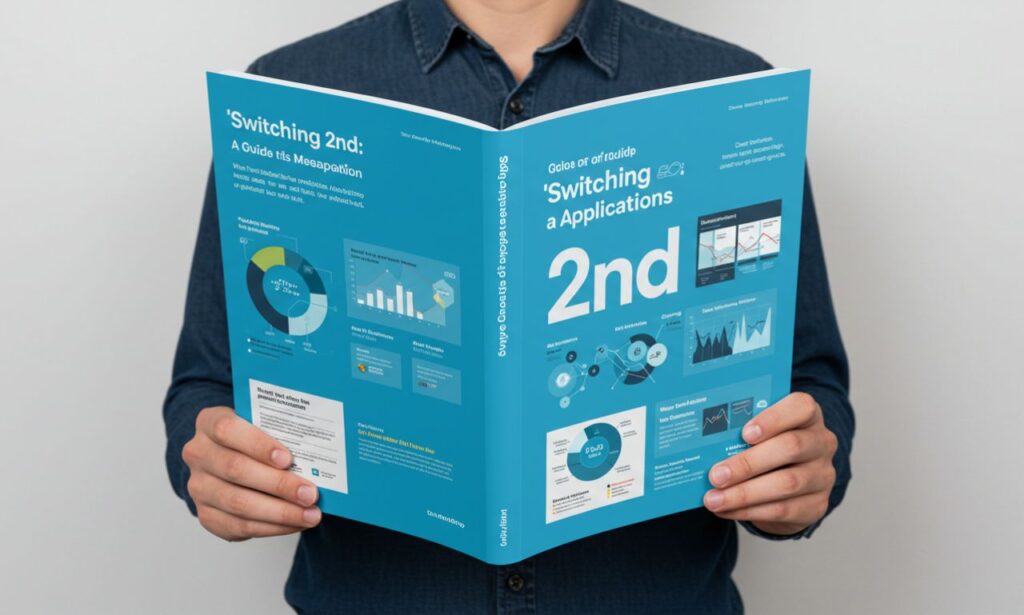In today’s fast-evolving digital and cultural landscape, new terms emerge that capture imagination and provoke discussion. One of these intriguing ideas is Switching 2nd. Though the phrase may sound technical or abstract, it has increasingly been used in multiple contexts—ranging from technology and education to lifestyle and cultural symbolism.
This article takes a deep dive into Switching2nd, exploring its origins, potential interpretations, applications, features, and challenges.
What Is Switching 2nd?
At first glance, Switching2nd seems like a phrase drawn from electronics or mechanics, but it extends far beyond that. Its flexible nature allows it to symbolize:
-
A technical process, such as changing states or gears in a system.
-
An educational strategy, where “switching” may mean adopting a secondary method of learning.
-
A lifestyle approach, representing the act of choosing a second path or alternative.
This adaptability makes Switching2nd a multidimensional concept that resonates differently depending on the field.
The Origins of Switching 2nd
The story of Switching2nd comes from blending older terminology with modern interpretations.
-
Mechanical roots: In engineering or driving, “switching2nd” might mean shifting to second gear, symbolizing progress.
-
Technological rise: In computing, it can mean transitioning between secondary systems or backup networks.
-
Cultural adoption: In modern discourse, it has come to represent adaptability, resilience, and readiness to embrace alternatives.
Thus, Switching2nd has transformed from a purely technical term into a metaphor with broader meaning.
Why Switching 2nd Matters Today
In an age defined by constant change, Switching2nd reflects adaptability and transition. It matters because it symbolizes:
-
Progress: Moving from one stage to another.
-
Backup readiness: Always having an alternative option available.
-
Resilience: The ability to adapt when the first path doesn’t work.
These qualities align with the needs of modern industries and personal development.
Applications
Switching 2nd in Technology
In tech, Switching2nd often refers to secondary systems or backup processes.
-
Network systems: Switching to a secondary line when the primary fails.
-
Computing: Moving to backup servers during outages.
-
AI and automation: Using alternative algorithms when the primary process fails.
This ensures continuity, reliability, and efficiency.
Switching 2nd in Education
In education, Switching2nd represents adopting secondary strategies for learning.
-
Moving from traditional learning to digital platforms.
-
Switching to secondary study methods like practice tests or simulations.
-
Adopting a second language or skill as part of personal growth.
It highlights the importance of flexibility in modern education.
Switching 2nd in Lifestyle
On a personal level, Switching2nd symbolizes resilience and choice.
-
Choosing a second career path.
-
Shifting to alternative health or wellness practices.
-
Embracing new hobbies or perspectives when the first option no longer works.
It’s about finding comfort in alternatives rather than being stuck.
Features
Some defining aspects of Switching2nd include:
-
Adaptability: Works across multiple contexts.
-
Progressive action: Represents forward movement.
-
Reliability: Acts as a safety net in case the first approach fails.
-
Symbolism: Beyond utility, it conveys resilience and openness to change.
Cultural Relevance of Switching 2nd
Culturally, Switching2nd resonates with themes of resilience, choice, and innovation. In storytelling, it may symbolize the hero’s decision to embrace an alternative path. In communities, it reflects adaptability in the face of challenges.
It has become a metaphor for modern living—embracing change and valuing options.
Switching 2nd and Sustainability
An often-overlooked aspect of Switching2nd is its link to sustainability. By promoting alternatives, it aligns with responsible practices:
-
Encouraging backup systems that prevent resource wastage.
-
Supporting sustainable second options, like renewable energy.
-
Promoting secondary strategies that reduce dependency on limited resources.
Challenges
While powerful, Switching2nd also faces challenges:
-
Overgeneralization: Too broad an interpretation may dilute its meaning.
-
Decision fatigue: Too many secondary options can overwhelm people.
-
Dependence on backups: Relying too heavily on “second” choices may reduce focus on primary systems.
Addressing these challenges ensures that Switching2nd retains its value.
Case Studies
-
Technology: A company implements a Switching2nd protocol to shift to secondary servers during outages, ensuring uptime.
-
Education: Students “switch 2nd” to digital learning tools when physical classes are disrupted.
-
Lifestyle: An individual embraces a secondary career path after economic shifts.
Each example reflects the versatility of Switching2nd.
The Future of Switching 2nd
The future of Switching2nd lies in its adaptability:
-
In technology: Becoming a core principle in system design.
-
In education: A standard for hybrid and lifelong learning.
-
In culture: A metaphor for resilience and progress.
-
In sustainability: A framework for alternative eco-friendly solutions.
Global Perspective
Worldwide, Switching2nd resonates as societies grapple with uncertainty and rapid change. In Asia, it may represent embracing technology for resilience. In Europe, it may reflect alternative sustainability practices. Globally, it symbolizes a mindset of preparedness.
Final Thoughts
Switching2nd is more than a phrase; it is a philosophy of adaptability, resilience, and readiness for alternatives. From technology and education to lifestyle and culture, its applications are vast.
Though it faces challenges like overgeneralization and reliance on backups, its potential to inspire progress and sustainability makes it highly relevant in today’s world.
As the future unfolds, Switching2nd may become a guiding principle for innovation, balance, and resilience.






